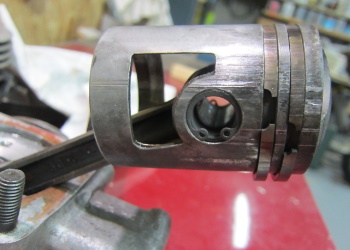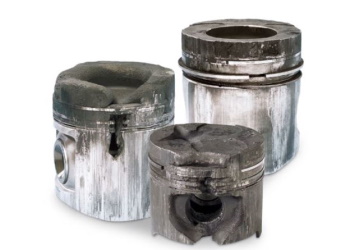
Home > general information > Tips and Guides > Technical guides > General Guides >
HOW NOT TO TIGHTEN YOUR MOTORCYCLE ENGINE?
The engine squeezes under the action of an overheated or poorly lubricated piston. Without oil, the piston will go to tighten against the cylinder, which will then block the movement to go and return.
Tightening is usually more about 2-stroke engines. They are mechanically more prone to it. This is because the 2 beats use a back and forth motion to generate a cycle. The movement is repeated more often, which makes the action of the motor more dynamic and the reactions more nervous. Since air, gasoline and oil are mixed together, the level of lubrication is lower.
It remains rarer to squeeze a 4 time since it must go back and forth. The crankshaft therefore makes 2 revolutions to generate a complete cycle.
Another technical point, we do not mix gasoline, air and oil. The oil remains separate, which limits the possibilities of lubrication faults.
Signs of a motorcycle engine jerk
The manifestations of a tightness can vary according to the nature of the problem. When tightening at all four corners, the marks appear on both sides of the piston and form a perfect square. If the piston is overheated, it is the thick parts that expand more. This type of tightening is very common in high efficiency motors.
If the tightness of the engine is due to a lack of mixture, it recognizes itself.ar a strong marking on the side of the exhaust. Par against, on the other side, one can notice a rather weak marking. The exhaust gases become hot and eventually par burn off the film of oil between the piston and the liner, which causes the engine to tighten.
Too frequent air intakes can end up par cause the engine to seize. The tightening due to a small air inlet appears as the tightening at the four corners. If there is too much air inlet, it may look like lean fuel tightness.
A detonating tightening is caused par an engine running on fuel that is too low in octane. It can cause significant heat resulting in damage to the combustion chamber. The fact that the piston overheats can damage the cylinder head and block the rings. When the segments are blocked, the flames in the combustion will burn the oil film of the liner. This is where the tightening process begins.
![]()
The causes of an engine seizure
Several factors can be the source of a tight engine, namely lack of lubricant, old or dirty oil and the accumulation of rust and grime in the engine. The tightening of an engine can cause the deterioration of your cylinder head. It could also be that your segments are freezing.
Lack of lubricant: lack of lubricant is the most common cause of engine seizure. Adding low quality oil to your scooter's engine can end upar cause it to tighten.
Old or dirty oil: investing in medium-grade oil can be good for your wallet. However, it may endar cause very serious problems with the proper functioning of your engine. Over time, the oil tends to thin and its lubricating effects may reduce. Old or dirty oil is the main cause of piston failure, which can lead toar following a tightness of the engine.
Rust and grime buildup in the engine: Rust and grime buildup occurs in the engine when the engine has not been run for too long. Water and condensation can thus accumulate in the engine and in the carburettors, hence the formation of rust. The latter will lead to the fusion of the engine cylinder wall with the piston.
Proper engine maintenance to avoid tightening
Most of the tightening comes from the rings and not from the piston. If the engine is running too fast, the heat causes the ring to expand in diameter, causing the two ends of the ring to touch so hard that the ring scrapes the liner too hard. An overheated segment may have enough force to remove the oil film and start tightening. A tightening par segment is seen par a marking all around the piston with the ring stuck in its groove all around.
Tips to avoid squeezing your engine:
If you respect the recommendations below, your engine will have a long life.
General: for 2-stroke engines, pulling in the engine is equivalent to getting ready for repairs. However, tightening is never inevitable.
At startup: warm up the engine well at idle, and at least 5mn before starting to roll.
Lubrication: it is better to put a little more oil and carbonize the engine a little more, than to tighten!
Fuel: Thoroughly clean and adjust the carburettor (best to have a slightly rich setting). Thoroughly clean the air filter. Check that there is no air intake in the engine, check the air line (tightening of the hoses), arrival of the autolube on the carburettor clogged.
Engine maintenance : apply when fitting the rings and the piston: ring groove lugs, piston clips, etc. Check the operating clearances each time the cylinder is removed (conrod small end and big end, piston pin ), and check the color of the piston.
Conclusion
To avoid the motor tightening, it is recommended to always respect the heating time. Try not to drive constantly at high speed. Especially since it increases fuel consumption. It is necessary to make sure every day that the engine contains enough oil. This last must be changed at least once par year. It is a good idea to consult the owner's manual for the correct oil and the frequency of changes!
If you are not using your two-wheeler, try to turn it on from time to time. Let it idle so that the fluids circulate and the oil can reach its maximum operating temperature. This operation helps to prevent rust and the accumulation of dirt.
























